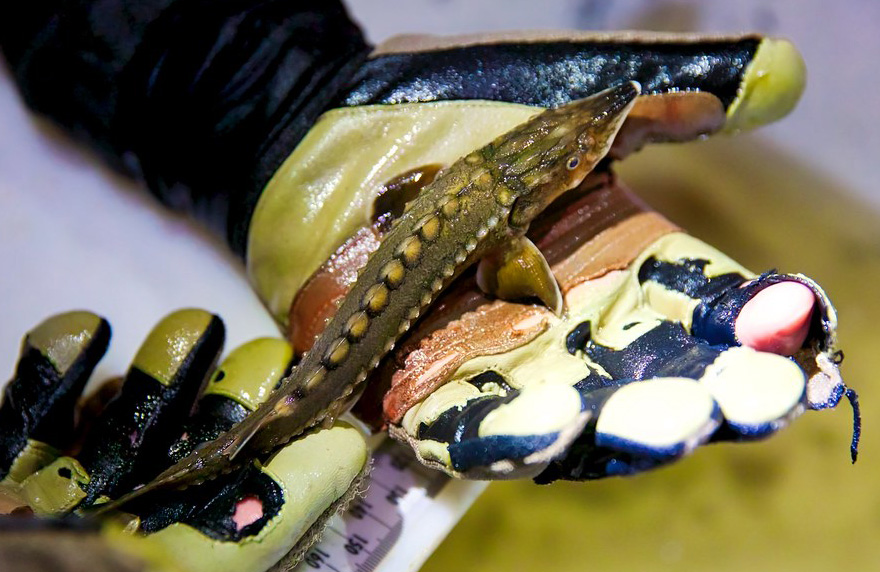
New strategy will support two fish species with different needs
During the spring and summer, cold water is released from Lake Shasta into the Sacramento River to create favorable spawning conditions for the winter-run chinook salmon. These fish became threatened after being cut off from their historical spawning grounds when Shasta Dam was built.
But while salmon eggs need cold water for survival, the influx of colder temperatures can be detrimental to young green sturgeon in the river, who depend on warmer waters to grow and thrive.
To resolve this conflict, a team of scientists at UC Santa Cruz and the National Marine Fisheries Service have developed a water management strategy that will benefit both species. Using statistical modeling, the experts found that dam releases can be managed – in times without severe drought – to support the fish as well as the needs of agricultural water users downstream.
“It’s a win-win-win here in the sense that we’re not giving up anything to get an improvement for the green sturgeon,” said study co-author Professor Eric Palkovacs. “Currently, the primary management objectives are keeping it cold for the salmon eggs and delivering enough water downstream. As a result, we’ve been refrigerating the river in regions where historically the green sturgeon have been spawning.”
The team found that discharge rates and water temperatures strongly influence the body condition of larval green sturgeon. In years with large cold water releases, egg survival for winter-run chinook salmon was high, yet the condition of juvenile green sturgeon was poor. On the other hand, drought years with low flows and warmer water helped the green sturgeon flourish while salmon egg survival was low.
Study first author Liam Zarri, who conducted the research as a graduate student, explained that the key to meeting the needs of both species is that they spawn at slightly different times of the year.
“We’re able to suggest a management scenario which uses the differential timing of spawning in these two species. When they overlap, our model gives us the ideal temperature and flow for when both species are present,” said Zarri.
He noted that the dam releases can draw either cold water from the bottom of the lake or warmer water from closer to the surface. Under the proposed management solution, low flows of warmer water can be released early in the season to support green sturgeon, and high flows of cold water can be released late in the season to benefit salmon and meet agricultural water needs.
Both salmon and sturgeon are present in the part of the river most affected by the dam releases in June or July, making management more complicated during this overlap period. The researchers pinpointed the ideal conditions of temperature and water flow that dam managers can pursue in an effort to keep the river cool enough for salmon and warm enough for sturgeon.
“Under the current management, there is quite a long period of cold water releases starting very early in the season before the chinook salmon have really started showing up in earnest. We’re saying that you can wait until the green sturgeon have matured and moved out of the system,” said Professor Palkovacs. “That has a side benefit in drought years, when limiting those early releases saves water for later in the year when it’s more valuable, both for salmon and for downstream water demand.”
The study is published in the Journal of Applied Ecology.
—
By Chrissy Sexton, Earth.com Staff Writer
Image Credit: U.S. Fish and Wildlife Service













